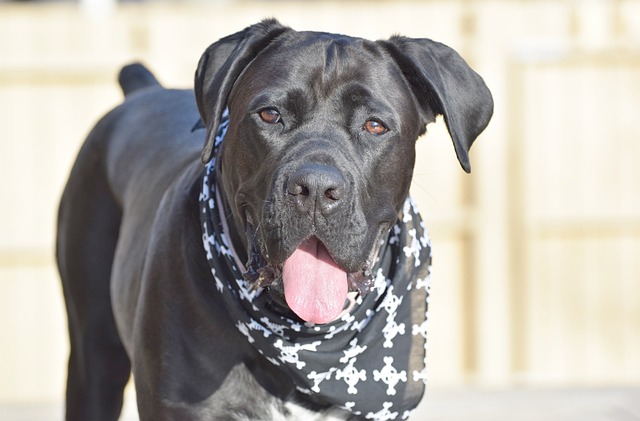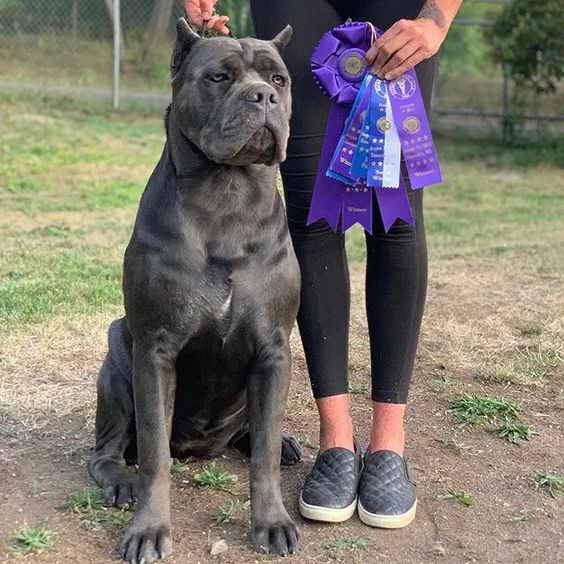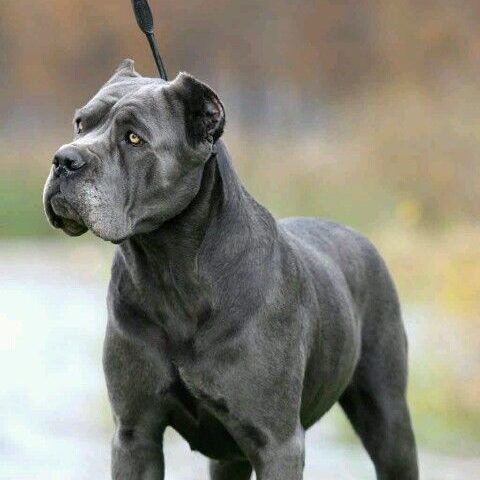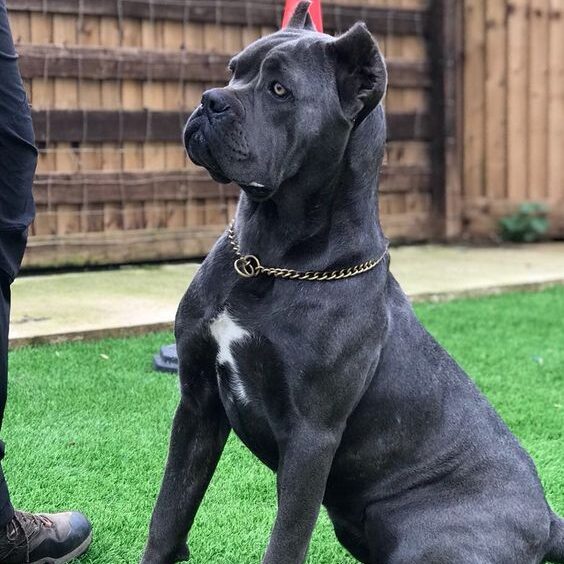
Cane Corsos are powerful and intelligent dogs that require proper training to become well-behaved and well-adjusted companions. Training your Cane Corso is not only important for their behavior but also for their mental and physical well-being. In this comprehensive guide, we will delve into various aspects of Cane Corso training to help you raise a happy and obedient canine companion.
How much training does a Cane Corso need?
Training a Cane Corso is a vital part of ensuring their well-being and harmonious coexistence within your household. These majestic dogs possess both intelligence and strength, making proper training an essential aspect of their development. But how much training does a Cane Corso actually need? The answer lies in understanding their unique characteristics and requirements.
Setting the Training Foundation
Every successful training journey begins with a solid foundation. For Cane Corsos, this involves establishing basic commands like “sit,” “stay,” “come,” and “down.” These fundamental commands not only ensure obedience but also create a basis for effective communication between you and your dog. Socialization during the early stages is equally important, exposing your Cane Corso to various people, animals, and environments. This helps prevent behavioral issues that can arise from fear or anxiety later in life.
Consistency is key when laying this training groundwork. Regular training sessions that are short and focused provide the structure your Cane Corso needs to grasp commands and behaviors. Positive reinforcement, such as treats, praise, and play, motivates your dog to learn and obey. As they progress, gradually introduce distractions to test their response in different situations.
Advanced Training for Cane Corsos
Once the foundation is solid, you can explore advanced training for your Cane Corso. These dogs thrive on mental stimulation, so incorporating complex commands and tricks keeps their minds engaged. Commands like “roll over,” “fetch,” and even more intricate behaviors enhance the bond between you and your dog while providing mental exercise.
Off-leash training is another level of skill that requires trust and control. Teaching your Cane Corso to respond reliably to commands without a leash is both freeing and practical. It’s important to practice this in safe, enclosed areas before attempting it in open spaces.
Mental enrichment activities like puzzle toys, scent detection games, and even agility training offer a diverse range of challenges that cater to their intelligence and athleticism. This not only prevents boredom but also allows you to tap into their innate abilities.
At what age does Cane Corso’s training start?
The journey of Cane Corso training begins early, as soon as you bring your puppy into your home. Puppies are like sponges, absorbing experiences and lessons that shape their future behavior. The ideal age to start training your Cane Corso is around 8 to 12 weeks. This is the time when their minds are open to learning, and they are most receptive to new experiences.
Cane Corso training in different ages
| Age Range | Training Focus | Training Activities | Training Tips |
|---|---|---|---|
| Puppy (8-12 weeks) | Socialization, Basic Commands Introduction | Expose to various people, dogs, environments | Keep training sessions short and positive |
| Teach “sit,” “stay,” “come” | Use treats and praise for positive behavior | ||
| Crate training for comfort and routine | Start building trust and communication | ||
| Adolescent (4-6 | Intermediate Commands, Walking Etiquette, | Reinforce basic commands | Be patient with potential behavioral challenges |
| months) | Addressing Challenges | Leash manners and loose leash walking | Introduce leash training and walking etiquette |
| Expose to distractions and new situations | Use consistent commands and reward systems | ||
| Training to address jumping and barking | Stay consistent with training approach | ||
| Adult (1-2 years) | Advanced Obedience, Specialized Training | Complex commands, tricks, and agility | Keep training engaging and mentally stimulating |
| Controlled guard behavior training | Balance instinctual behaviors and obedience | ||
| Polishing recall command and off-leash | Use positive reinforcement for desired behavior | ||
| Further socialization with other dogs | Consistently enforce established boundaries | ||
| Senior (6+ years) | Maintenance, Physical and Mental Exercise | Light exercises to maintain mobility | Adjust training intensity to suit their needs |
| Puzzle toys and interactive games | Monitor their health and adapt training as needed |
Early Training Phases
During these early weeks, focus on socialization and establishing a strong foundation of trust and communication. Introduce your Cane Corso to various people, other dogs, different environments, and common household sights and sounds. This exposure helps prevent fear and aggression issues in the future. Basic commands like “sit,” “stay,” and “come” can also be introduced in a positive and encouraging manner.
It’s important to note that puppies have shorter attention spans, so keep training sessions short, fun, and rewarding. Use treats, praise, and play as positive reinforcements. Consistency is key – practice these commands daily to help them become ingrained behaviors.
Intermediate Training
As your Cane Corso puppy enters adolescence, usually around 4 to 6 months, their attention span and ability to learn grow. This is a great time to build on the foundation you’ve laid. Reinforce the basic commands and introduce more intermediate-level commands like “lie down” and “leave it.”
Adolescence is also the phase where you might encounter some challenging behaviors, such as testing boundaries or being easily distracted. This is a natural part of their development, and patient and consistent training will help you navigate through this period smoothly.
Incorporate leash training and walking etiquette into their routine. Teaching them to walk on a loose leash and respond to your cues enhances their overall obedience and makes walks enjoyable for both of you.
Cane Corso Obedience Training
Obedience training is the cornerstone of a well-behaved and harmonious relationship with your Cane Corso. These intelligent and powerful dogs thrive when they understand their roles and boundaries within the family. Obedience training not only ensures safety but also nurtures the bond between you and your canine companion.
Fundamental Obedience Commands
Teaching fundamental obedience commands lays the groundwork for effective communication. Begin with basic commands like “sit,” “stay,” and “lie down.” These commands provide the framework for managing everyday situations and keeping your dog under control.
The recall command, often overlooked, is crucial for a Cane Corso’s safety. Teaching your dog to come when called can prevent potential dangers and allow you to enjoy off-leash activities together.
Leash manners are equally vital. Leash training teaches your Cane Corso to walk calmly without pulling. Start by getting them used to wearing a leash and collar, then gradually introduce walking on a loose leash.
Overcoming Training Challenges
While Cane Corsos are intelligent, they can sometimes exhibit stubbornness or other behavioral challenges. One common challenge is minimizing barking tendencies. Use positive reinforcement to teach your dog the “quiet” command, rewarding them when they stop barking on command.
Stubbornness can emerge when a Cane Corso tests boundaries. Maintain consistency in your commands and expectations. Avoid using harsh punishment, as this can lead to resistance.
Another challenge is reinforcing positive behavior while discouraging negative habits. For instance, if your Cane Corso jumps on people, teach an alternative behavior like sitting when they greet someone. Consistency in rewarding the desired behavior helps them understand what’s expected.
Training sessions should be short, engaging, and positive. Keep in mind that Cane Corsos respond best to positive reinforcement, so use treats, praise, and play to motivate them. Be patient and persistent – behavioral change takes time.
Cane Corso Agility Training
Agility training is an exhilarating and dynamic way to channel your Cane Corso’s energy and intelligence. This form of training not only provides physical exercise but also stimulates their minds, resulting in a well-rounded and happy canine companion. Cane Corsos’ athleticism and enthusiasm make them excellent candidates for agility training.
Agility Training Benefits
Engaging your Cane Corso in agility training offers a multitude of benefits. First and foremost, it provides an outlet for their abundant energy. Regular agility sessions help prevent boredom and potential destructive behaviors that may arise from pent-up energy.
Agility training also strengthens the bond between you and your dog. As you work together to navigate obstacle courses, your communication and teamwork improve. This can translate into better obedience and understanding in various aspects of their life.
Mental stimulation is equally important. Agility courses require quick thinking and decision-making, which challenges their cognitive abilities. This mental workout is just as vital as the physical exercise they receive.
Agility Training Phases
Agility training is typically divided into several phases to ensure a gradual and positive experience. Start with introducing your Cane Corso to basic agility equipment like tunnels and jumps. This familiarization builds their confidence and comfort around the equipment.
As they become more comfortable, progress to more complex courses. This includes weaving through poles, navigating through tire jumps, and tackling A-frames and dog walks. Each obstacle adds a layer of challenge and excitement to their training.
Participating in agility competitions, whether formal or informal, is a rewarding way to showcase your Cane Corso’s agility skills. Competitions foster a sense of accomplishment and provide an opportunity for you and your dog to shine.
Remember, patience and positivity are key throughout the agility training journey. Always ensure the safety of your Cane Corso by using appropriate equipment and avoiding excessive strain on their developing joints.
Cane Corso Separation Anxiety Training
Separation anxiety can be a challenging issue for Cane Corsos, who often form strong bonds with their families. However, with the right training and techniques, you can help your Cane Corso feel more comfortable and secure when left alone.
Understanding Separation Anxiety
Understanding the root causes of separation anxiety is crucial before embarking on a training journey. Cane Corsos are pack-oriented animals, and being left alone triggers feelings of distress and insecurity. Common signs of separation anxiety include excessive barking, destructive behavior, and even physical symptoms like drooling or pacing.
Positive Alone Time
Positive alone time is the cornerstone of separation anxiety training. Start by gradually desensitizing your Cane Corso to your departures. Begin with short periods of separation and gradually increase the duration over time. Create a calm environment by leaving soothing music or a familiar blanket.
Interactive toys and treat-dispensing puzzles can also be invaluable tools. These engage your dog’s mind and provide a positive distraction during your absence. Associating your departures with enjoyable activities helps shift their perception of being alone.
Teaching your Cane Corso that your departures are not permanent is essential. Avoid making a fuss when leaving or returning, as this can heighten their anxiety. Practice leaving and returning multiple times without interacting excessively, showing them that your departures are routine and non-threatening.
If separation anxiety is severe, seeking professional help is a wise decision. A certified dog trainer or a veterinarian specializing in behavior can provide tailored strategies to address your Cane Corso’s specific needs.
Leash Training Your Cane Corso
Leash training is a fundamental skill that not only ensures enjoyable walks but also promotes safety for both you and your Cane Corso. These powerful and energetic dogs benefit greatly from leash training, as it teaches them proper behavior while exploring the world around them.
Teaching Leash Etiquette
Teaching your Cane Corso leash etiquette requires patience and consistency. Begin by getting your dog accustomed to wearing a collar and leash in a controlled environment. Allow them to investigate the leash, rewarding them for positive reactions with treats and praise.
Next, practice walking on a loose leash. Start in a quiet area with minimal distractions. When your Cane Corso walks beside you without pulling, reward them with treats and praise. If they start to pull, stop walking and wait for them to relax the tension on the leash before resuming.
Clicker or marker training can be incredibly effective for leash training. Using a clicker or a verbal marker like “yes” helps your Cane Corso associate the desired behavior with a reward.
Troubleshooting Leash Issues
Leash issues can arise due to various factors, but addressing them is possible with the right approach. If your Cane Corso pulls on the leash, avoid yanking them back. Instead, change directions abruptly when they start to pull. This interrupts their behavior and encourages them to focus on you.
Leash reactivity toward other dogs or stimuli can also be managed with training. Gradually expose your Cane Corso to these triggers from a distance where they remain calm. Reward calm behavior and gradually decrease the distance over time.
Remember, consistency is key. Use the same commands and techniques every time you walk your Cane Corso. Ensure that walks are not just about physical exercise but also mental stimulation. Allow them to stop and sniff, as this is an important way for them to explore their environment.
Training Cane Corso Not to Jump on People
Jumping on people is a common behavior issue in many dogs, including Cane Corsos. While it might seem like an affectionate gesture, it’s essential to train your Cane Corso to greet people calmly and appropriately. This not only prevents potential accidents but also establishes polite behavior that reflects positively on your dog.
Addressing Jumping Behavior
Addressing jumping behavior requires consistent training and positive reinforcement. When your Cane Corso jumps on you or others, avoid scolding or pushing them away, as this can inadvertently reinforce the behavior. Instead, teach them an alternative greeting behavior, like sitting or standing calmly.
One effective method is to turn away or cross your arms when your Cane Corso jumps. This removes the attention they seek, encouraging them to stop jumping and seek another way to interact with you.
Consistency is key. Inform all family members and visitors about the training protocol to ensure everyone uses the same approach. This prevents mixed signals that can confuse your Cane Corso.
Training Within Context
Training your Cane Corso not to jump should be contextual. For instance, when you arrive home, wait until your dog is calm before greeting them. Reward their calm behavior with affection and attention. This reinforces the idea that remaining calm leads to positive interactions.
Teaching your Cane Corso not to jump extends to visitors as well. Politely inform guests about your training efforts and ask for their cooperation in reinforcing the desired behavior. Provide treats for your guests to give your Cane Corso when they greet them appropriately.
Remember that consistency is essential during training. Don’t be discouraged by occasional setbacks. With time and repetition, your Cane Corso will learn that keeping all four paws on the ground leads to more positive interactions.
Training Cane Corso to Become a Great Guard Dog
Cane Corsos possess a natural protective instinct that, when harnessed through proper training, can transform them into exceptional guard dogs. Balancing their innate instincts with specific training techniques not only makes them effective protectors but also well-behaved and reliable companions.
Instincts and Training Balance
Understanding your Cane Corso’s protective instincts is crucial. These dogs have a strong territorial drive and a deep loyalty to their family. This instinctual behavior can be honed through training to ensure controlled guarding behavior without unnecessary aggression.
The key to successful guard dog training is striking a balance between harnessing their protective instincts and teaching them to differentiate between potential threats and normal situations. You want your Cane Corso to be alert and responsive to genuine dangers while remaining friendly and well-mannered around family, friends, and other pets.
Specialized Guard Training
Specialized guard training refines your Cane Corso’s instincts, turning them into a reliable and skilled guardian. Start with basic obedience training to establish a foundation of control. Commands like “watch,” “alert,” and “stop” can be incorporated into their training vocabulary.
Expose your Cane Corso to various situations they might encounter as a guard dog, such as strangers approaching the property. Teach them to alert you through barking or a specific command when they sense a potential threat.
However, it’s important to emphasize that training a Cane Corso to be a guard dog should never involve encouraging aggressive behavior. Aggression can pose serious safety risks and legal liabilities. Instead, focus on building their confidence, control, and reliability.
Consulting with a professional dog trainer experienced in guard dog training can be immensely helpful. They can guide you in creating a tailored training plan that suits your Cane Corso’s temperament and your specific security needs.
Indoor Training Methods for Your Cane Corso
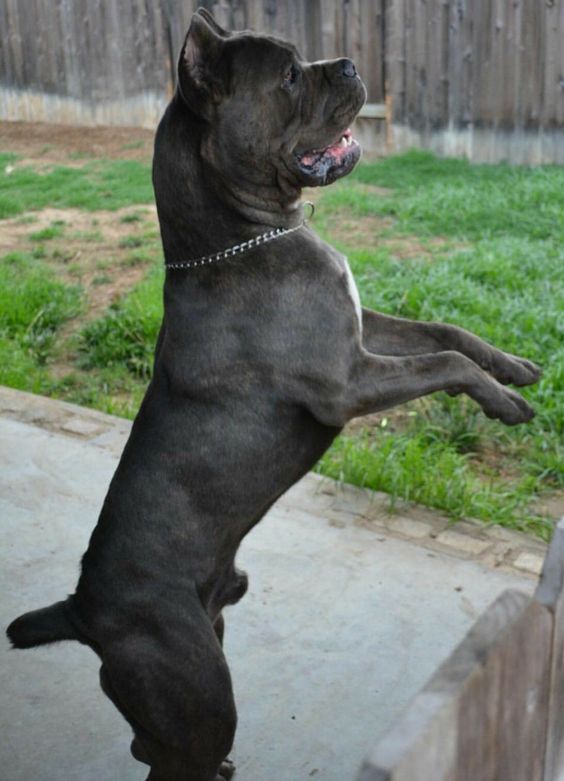
While outdoor activities are essential, indoor training methods play a crucial role in keeping your Cane Corso mentally stimulated, physically active, and well-behaved. These indoor exercises provide an excellent way to engage your dog’s mind, especially during inclement weather or when outdoor space is limited.
Indoor Training Activities
Indoor training activities offer a range of mental challenges that keep your Cane Corso engaged and entertained. Puzzle toys and treat-dispensing gadgets encourage problem-solving and focus. These toys require your dog to manipulate the puzzle to access treats, providing hours of mental stimulation.
Basic obedience training can also be practiced indoors. Reinforce commands like “sit,” “stay,” and “come.” Not only does this enhance their obedience, but it also strengthens the bond between you and your dog.
Incorporate scent detection games by hiding treats around the house and encouraging your Cane Corso to find them using their incredible sense of smell. This taps into their natural instincts and provides a fun and rewarding activity.
Weather-Independent Training
Indoor training is particularly valuable during adverse weather conditions. Rain or extreme heat might make outdoor activities uncomfortable or unsafe. Weather-independent training ensures that your Cane Corso still gets the exercise and mental stimulation they need.
You can even simulate outdoor walks indoors. Set up an obstacle course using household items like chairs, cushions, and cones. This not only engages them physically but also challenges their coordination and agility.
Remember, indoor training isn’t just about physical exercise – it’s about keeping your Cane Corso’s mind active and engaged. Rotate through different activities to prevent boredom and keep them eager to participate.
FAQs
Is Cane Corso training difficult?
Training a Cane Corso requires patience and consistency, especially due to their strong-willed nature. Seeking professional guidance can make the process smoother.
What’s the best age to start training my Cane Corso puppy?
Early socialization should begin as soon as you bring your puppy home, usually around 8 to 12 weeks. Formal training can start around 3 to 6 months.
Can I train my Cane Corso to be friendly with strangers and other pets?
Yes, socialization during the puppy phase is crucial for teaching your Cane Corso to interact positively with people and animals.
How can I prevent separation anxiety in my Cane Corso?
Gradual alone-time exposure, interactive toys, and establishing a routine can help prevent separation anxiety.
Are Cane Corsos good for agility training?
Yes, Cane Corsos can excel in agility training due to their athleticism and intelligence.
My Cane Corso pulls on the leash during walks. What should I do?
Use positive reinforcement techniques to teach your dog to walk calmly on a loose leash.
Are Cane Corsos suitable for families with children?
Proper training and socialization can make Cane Corsos great family dogs. However, supervision is important, especially with younger children.
Can I train my Cane Corso to be protective without being overly aggressive?
Yes, with proper training, you can teach your Cane Corso to exhibit controlled protective behavior without aggression.
What are some mental stimulation exercises I can do indoors with my Cane Corso?
Hide-and-seek games, puzzle toys, and obedience training can provide mental stimulation indoors.
Is professional training necessary for Cane Corsos?
While not mandatory, professional training can be highly beneficial, especially for first-time dog owners or those dealing with specific behavioral issues.
Conclusion
In the world of dog training, the journey of nurturing a Cane Corso from a playful puppy to a well-behaved and confident adult is a fulfilling and rewarding experience. This comprehensive guide has delved into various stages and aspects of Cane Corso training, offering insights into creating a strong foundation of obedience, fostering mental stimulation, and harnessing their natural instincts.
With over 4 years of devoted companionship with my beloved Labrador Retriever, Robin, I have cultivated a deep understanding and expertise in all things canine. From training and behavior to health and well-being.

